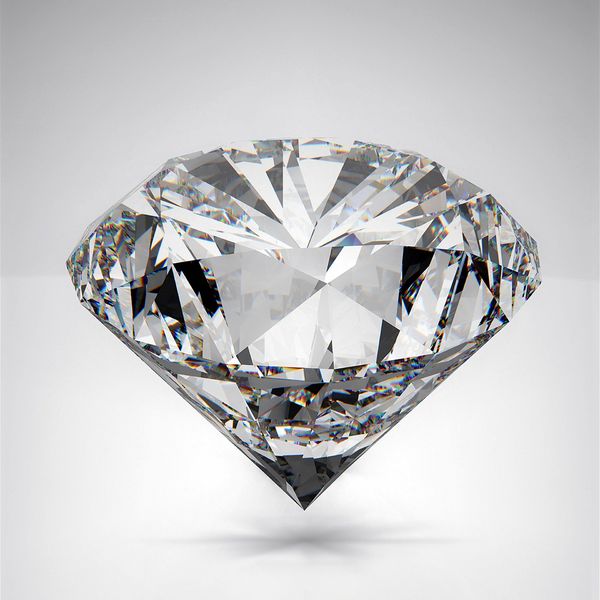How to Recognise a Good Diamond
Many years ago, I must confess that I was something of a diamond cynic (coming as I do from silver and goldsmithing) but on an intensive diamond training and grading course, somewhere around the 250th stone, it dawned on me that the very best examples are truly astounding and delightful objects – perhaps my cynicism arose from only having ever seen mediocre stones up until that point. My epiphany was somewhat akin to a person who had only ever had flat pack furniture coming across a fine example of a handmade Welsh Oak dresser for the very first time.
Today, I love to choose stones specifically for a customer to make use of in a commission or handmade ring especially for them – for me, this adds value to the whole process of making and selling.
Some things about diamonds are very well known: they are a girl’s best friend; they are forever; they are very sparkly!
But not all diamonds are created equal – only around one in five ever makes it to the jewellery market and of those that are cut and polished for jewellery, only a very small proportion are good enough to be considered investment grade.
Over the past few decades more and more of us have become familiar with the four Cs used for grading diamonds: cut, colour, clarity and carat. The first of these is often given the least weight but can be the most important. Far more than simply the shape of the finished stone, round brilliant, emerald, princess, cushion and so on, the cut can give life and heat to a stone or, when badly executed, leave it cold and lifeless. I will return to cut in a future blog as this is the most neglected of the grading categories.
For clarity and colour, it is only those given the top grades by one of the authoritative grading laboratories (GIA remains the world leader) that can be considered investment grade. Carat is simply the weight of the stone with 1ct being equal to 0.2gms.
The classic round brilliant cut remains the most expensive shape for two reasons: more of the original uncut stone is lost during the cutting and polishing (around 65%, against 50% for most other cuts) and it is definitely the sparkliest cut. The ultimate cost of any particular stone will depend on the combination of all four Cs with a steep rise in price as quality increases – a 1ct round brilliant diamond can cost anything from a few thousand pounds for the poorest examples to tens of thousands for the very best stones.
The vast majority of diamonds sold in the UK retail jewellery market are mid-range in terms of quality, colour and clarity. For us at Rhiannon this is not enough. We like to make things for people to treasure for their lifetimes and beyond so we insist on using high quality GIA certificated stones hand selected by us. I source and buy all of the precious stones personally and I am meticulous (and perhaps a little obsessive) in my selection, often sorting through hundreds of stones in order to pick the very best of them. I maintain that stones have to be sorted and selected by eye, as a packet of around 50 stones, all nominally sharing the same cut, colour and clarity will invariably contain around five excellent stones and five very poorly cut stones. It is well worth the time and effort required to make sure the top five end up in Rhiannon jewellery!
